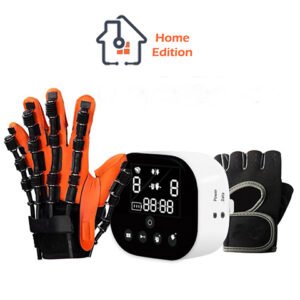Brachial plexus injury rehabilitation
The brachial plexus is the network of nerves that sends signals from your spinal cord to your shoulder, arm, and hand. A brachial plexus injury occurs when these nerves are stretched, compressed, or in the most serious cases, ripped apart or torn away from the spinal cord.
Treatment for a brachial plexus injury includes maintaining mobility of the affected areas through a passive and active range of motion. It also includes regaining and promoting strength through active exercise. This should mean that the recovery process requires doing extensive and regular rehabilitation activities.
Several rehabilitation devices are used in this regard. The Portable Rehabilitation Robotic Gloves: SIFREHAB-1.0 is among the most effective and commonly used devices.
The Portable Robotic Rehabilitation Gloves: SIFREHAB-1.0 helps patients who are not able to attend physical therapy sessions at the hospital to do their own rehabilitative training safely and independently.
The device is designed to help patients rebuild their hand functions through exercise and then again their ability to take care of themselves in daily life.
With the SIFREHAB-1.0, a simultaneous movement of both hands activates mirror neurons to replicate the normal hand nerve pathways to the affected hand. That eventually promotes autonomic recovery of the brain and so the gradual recovery of the brachial plexus.
With the help of this device, the brachial plexus will stimulate the network of nerves in the shoulder and re-ignite it to carry movement and sensor signals from the spinal cord to the arms and hands. In that way, the hand will gradually regain its movement.
Since the SIFREHAB-1.0 is specifically designed to address Tendon and/or ligament tears and other tendon injuries like the brachial plexus injury, it performs various functions. It actually serves in Mirror therapy training and Activities of daily living (ADL) training.
Brachial plexus injury is a fairly rare condition. It is more common among adolescents and young adults. The problem is that its pain can be mild to severe, and temporary to chronic. That’s why such injury requires extensive rehabilitation training. The SIFREHAB-1.0 is designed to fulfill that specific function.

